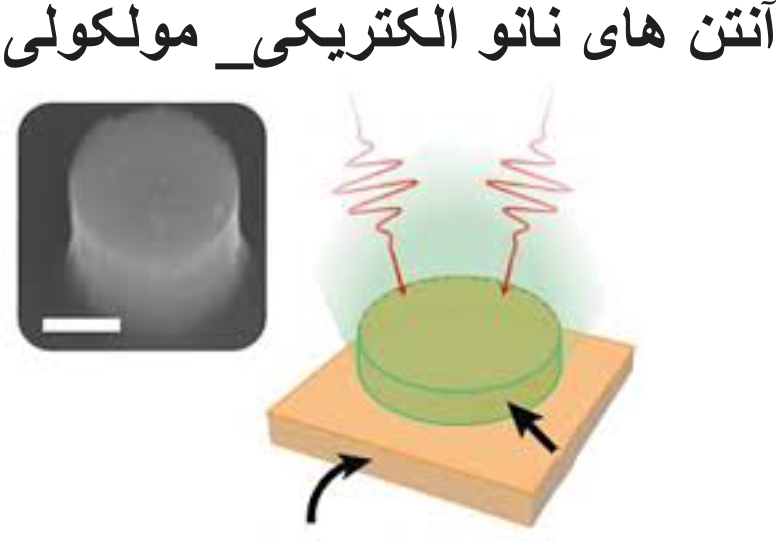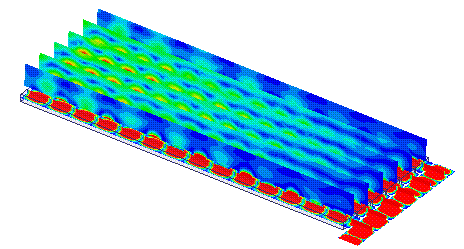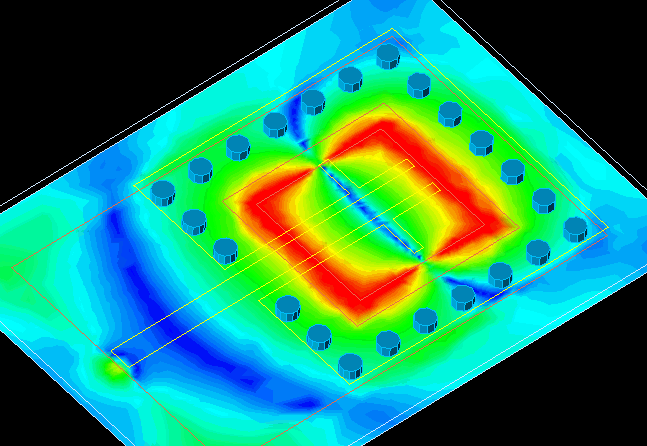_ Nano antennas (Rectenna)
Review Optical nano antennas and Rectenna Rectenna
Researcher and author: Dr. Afshin Rashid
Note: When the solar electromagnetic wave hits the surface of the nano-antenna, a time-varying current is created on the surface of the nano-antenna, and as a result, a voltage is produced at the place of its feeding gap.
Antenna is a device that can receive the electromagnetic wave in the space. In order to receive the solar electromagnetic wave by the antenna, the dimensions of the antenna must be in the order of the wavelength of the input to its surface, so in order to receive the solar radiation that is long Waves in the infrared, visible, and ultraviolet regions are included, and an antenna with nanometer dimensions is needed. Since the use of optical nano antennas to collect solar energy provides a practical solution with The high efficiency compared to other common photovoltaic technologies, such as solar panels, has led to rapid development in the nano-industry and optical materials.
Therefore, by placing the rectifier properly in the place of the nano-antenna feeding slot, the desired DC power is produced.In the solar Rectenna system Millions of nano-antennas are placed next to each other with a suitable rectifier and each one individually produces electrical energy using sunlight. The conversion of the solar light energy absorbed by the antenna is done by a suitable rectifier. Suitable diodes for this frequency range are 12 MIMs. This diode should be able to work at frequencies of more than 30 terahertz. Schottky diode which is a semiconductor diode with low voltage drop and relatively fast response speed is capable of rectifying and detecting signals with a frequency of up to 5< a has i=11>terahertz. MIM diode due to the femtosecond tunneling time and increase spectacular response speed, can be used as an alternative to Schottky diode in the region Infrared and visible frequencies should be used.Since nanoantennas have the ability to absorb a wide angle, evenin the case of oblique solar radiation to the surface of the solar panel, the efficiency They are preserved to a significant extent. This system can also transmit the energy radiated from the earth or the terrestrial radiation that is caused by the daily radiation of the sun to the surface of the earth and in the wavelengths of 10 micrometer, i.e. absorb frequencies of about 90 terahertz, thereforethe reason for the nanoantennas of the solar system by collecting these radiations in >, they reduce the cost and speed in the construction process.currently diode and antenna structures Used in solar panels, they are made using the electron sketch method. Although this construction method is expensive and time-consuming to produce in laboratory and research scales, but if these structures are produced in a large volume and with a suitable production method .at night or in bad weather conditions, they can produce electricity
(Nano Rectenna) how to make and uses
Combining optical antennas next to the appropriate rectifier system, which is called Rectenna for short, in recent years in order to convert the light energy of the sun into Electric energy has been introduced and is rapidly being developed and researched. While the efficiency of common solar cells in the market is about 30% in the best case, the efficiency of two to three times this value can be obtained for Recten. . It should be mentioned that the Rectenna has been studied in recent years, especially in the issue of power transmission in the microwave band. For example, in the theoretical mode for a single frequency of 9.2 GHz, more than 10% of the predicted efficiency is. Of course, the practical efficiency of making these devices may be slightly different and should be determined in practice. Dipole antenna with =12> Linear polarization and λ/2 length, which has a relative bandwidth of 11%, will be able to collect about 75.2 pW. >Using an antenna with double polarization, pW 5.5 power will be obtained. Considering the low receiving power of each independent antenna, it is customary to use anti-arrays in this cell, which also has its own rules and methods. a> has.
Antenna is a device that can receive the electromagnetic wave in the space. In order to receive the solar electromagnetic wave by the antennathe dimensions of the antenna must be in order is the size of the incoming wavelength to its surface, therefore, in order to receive solar radiation that includes the wavelengths of the infrared, visible and ultraviolet regions, An antenna with nanometer dimensions is needed. Since the use of optical nanoantennas to collect solar energy provides a practical solution with high efficiency compared to Other common photovoltaic technologies, such as solar panels, have led to rapid development in nanotechnology and optical materials.
Conclusion :
When the solar electromagnetic wave hits the surface of the nano-antenna, a time-varying current is created on the surface of the nano-antenna, and as a result, a voltage is produced at the place of its feeding gap.
Researcher and author: Dr. Afshin Rashid
Specialized doctorate in nano-microelectronics







